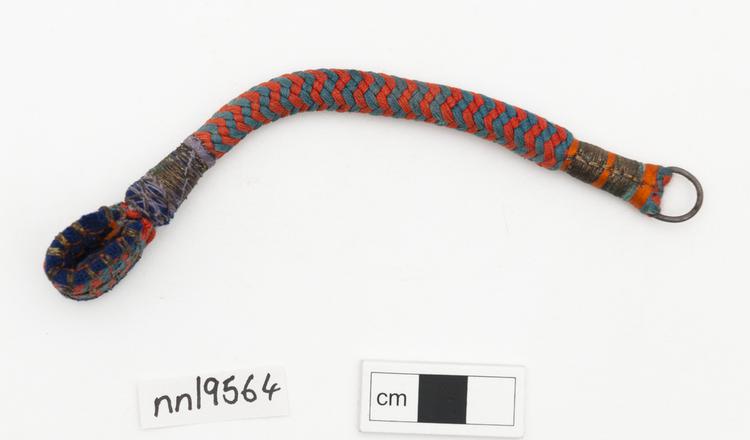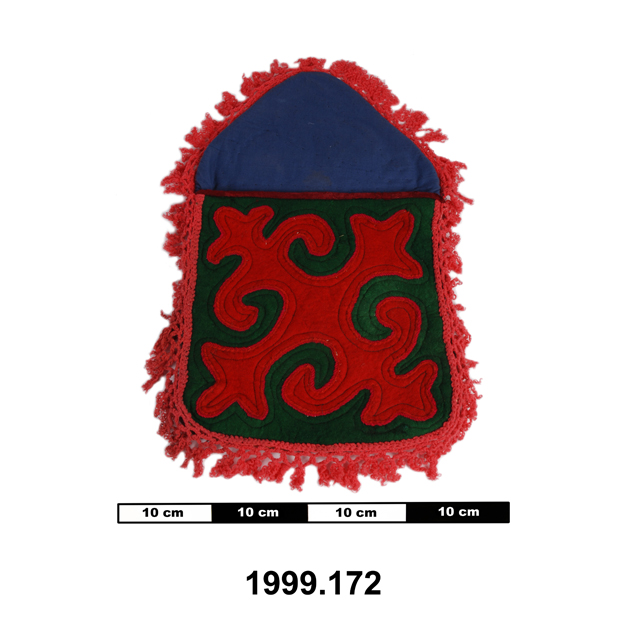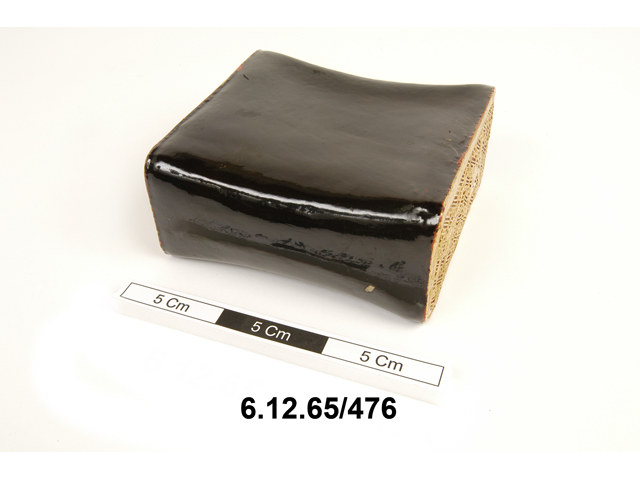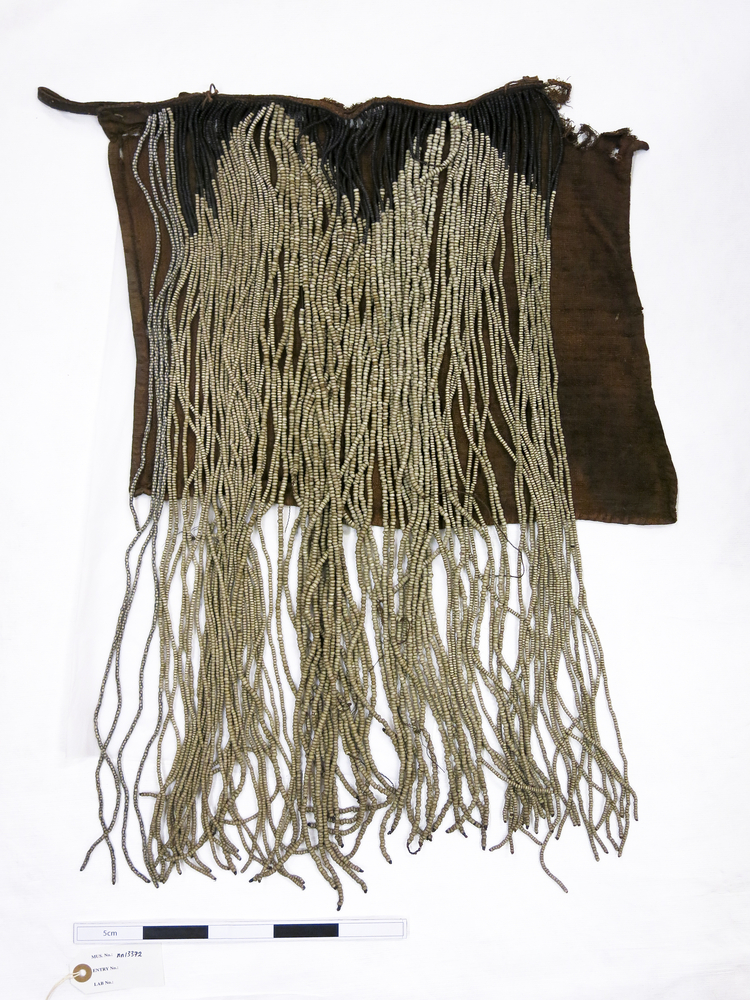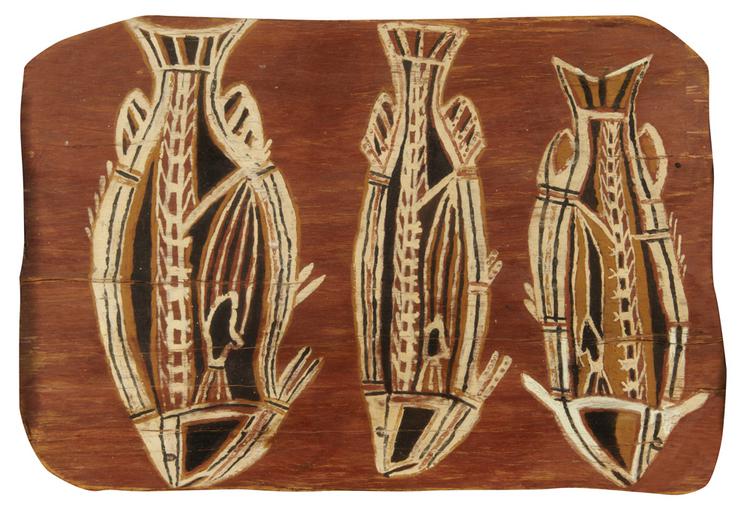
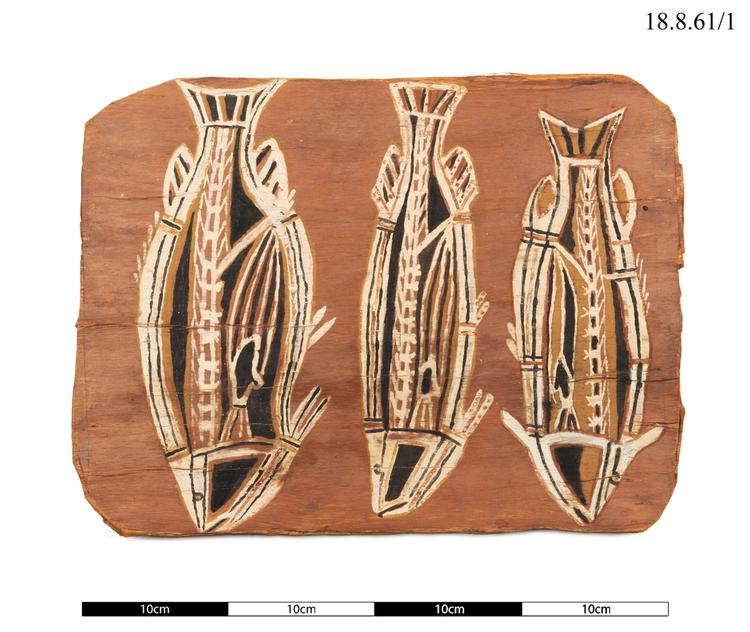
Aboriginal painting in white ochre, brown ochre, and charcoal pigments on a rectangular panel of bark. Three barramundi fish are depicted using the well-known 'x-ray' style that had been used in Arnhem Land for millennia. The spines, guts, and livers of the fish are clearly marked.
Arnhem Land, possibly Kunbarlanja (Oenpelli). Description: Bark painting using white and brown ochres to depict the skeleton and internal organs of three differently sized barramundi fish. Each fish is outlined in white ochre and infilled with black and yellow ochre. The heads are facing the long edge of the bark substrate. The painting of three fish (barramundi) in ‘x-ray’ style shows their structure and internal organs: optic nerve, backbone, and liver or heart. This style shows how knowledge is organised by Kuninjku culture into ‘inside’ and ‘outside’ knowledge. It gives practical advice on how to manage the body of the fish in order to eat it, outside knowledge, and may hold ‘inside knowledge’ about connections to ancestors which is accessible only to those who are initiated. There is continuity between the style and content of rock painting and bark painting in this area and the x-ray style was also found on bark used for the walls of shelters. ‘For approximately 10,000 years western Arnhem Land artists have revealed the interior complexity of human and animal forms by showing skeletal detail or body organs contained inside the figurative outline’ (Taylor, 2004, p.119) Reference; Luke Taylor, ‘Fire in the water: inspiration from country’ in Crossing Country, (Sydney: Art Gallery of New South Wales 2004)



